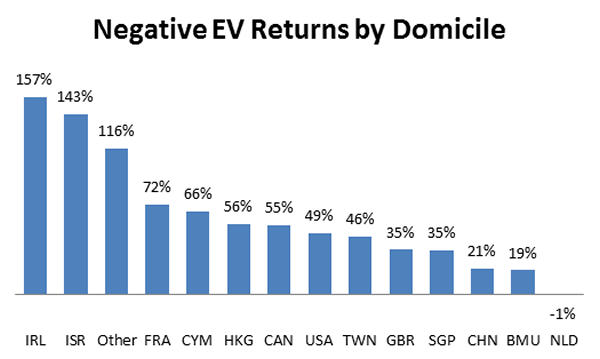Содержание

For instance, the expansion of textile industry may bid up the prices of raw cotton. Secondly, with the growth of an industry some external economies of technological type may accrue to the firms of that industry. On the other hand, external economies and external diseconomies cause the long-run average cost curve to shift down or up, as the case may be. As the number of firms in an area increases, each firm enjoys some benefits like, transport and communication, availability of raw materials, research and invention etc.
It can produce a variety of products, and sell them in different areas. By the diversification, of its products the large firm is able to reduce risks by counter-balancing the loss of one product by the gain from other products. By the diversification of markets, it can counter-balance the fall in demand in one market by the increased demand in other markets.
In the opinion of Prof. Chapman, ‘The external economies are those in which all business firms in an industry can share”. Moreover, the simplest case of an external economy arises when the scale of production function of a firm contains as an implicit variable the output of the industry. The demand for Y is given by DY D Y and the private marginal cost curve for Y by MC.
For instance, in case of moped industry, some firms specialize in rims, hubs and still others in chains, pedals, tires etc. It is of two types-horizontal disintegration and vertical disintegration. Prof. Stigler defines economies of scale as synonyms with returns to scale. The main force of Pigou’s treatment of the subject is that the “social cost” of producing a ton-mile of freight is 3.5 cents (3 cents for the railroad’s own costs, plus 0.5 cents for the destroyed crops).
Key Differences Between Internal and External Economies of Scale
As a firm increases its scale of production, the firm enjoys several economies named as internal economies. Basically, internal economies are those which are special to each firm. For example, one firm will enjoy the advantage of good management; the other may have the advantage of specialisation in the techniques of production and so on. All firms in a particular industry receive equal access to the benefits of external economies of scale.
When the scale of production of a firm is increased, it enjoys numerous selling or marketing economies. In the marketing economies, we include advertisement economies, opening up of show rooms, appointment of sole distributors etc. Moreover, a large firm can conduct its own research to effect improvement in the quality of the product and to reduce the cost of production.
Sibanye Stillwater : Year-end F2022 – Marketscreener.com
Sibanye Stillwater : Year-end F2022.
Posted: Tue, 28 Feb 2023 12:11:17 GMT [source]
The national account consistent total intermediate inputs are constructed as the difference between gross output and gross value added, discussed in the previous sections. We obtain the intermediate deliveries in each sector by subtracting the nominal gross value added from the nominal gross output. Explain the concept of scarcity, choice and opportunity cost with the help of Production possibility curve. The installation of large machines itself brings many advantages to a firm. The cost of operating large machines is less than that of operating small machines.
If https://1investing.in/ diseconomies outweigh the external economies, that is, when there are net external diseconomies, the industry would be an Increasing cost industry. External economies refer to all those benefits which accrue to all the firms operating in a given industry. Generally, these economies accrue due to the expansion of industry and other facilities expanded by the Government. Generally, these economies accrue due to the expansion of industry and other facilities expanded by the government.
A milder policy prescription is that private investors be provided with better information about one another’s intentions, which may be done through the French variant of economic planning . Let us consider further Pigou’s example of spark-emitting steam locomotives. Assume that the marginal cost of employing resources to produce a ton-mile of railroad freight service may be 3 cents.
Internal economies are those economies in production—those reductions in production costs—which accrue to the firm itself when it expands its output or enlarges its scale of production. The internal economies arise within a firm as a result of its own expansion independent of the size and expansion of the industry as a whole. There are several totally different sorts of internal economies of scale.
Individual firm experiencing economies of scale from a larger industry
Workers can usually feel extra isolated and less appreciated in a larger business and so their loyalty and motivation might diminish. It is more durable for managers to remain in day-to-day contact with employees and build up a good team setting and sense of belonging. It may happen due to a mismatch between the assorted operations and the optimum ranges of output. External diseconomies usually are not suffered by a single agency however by the firms operating in a given industry.
- Externalities also can occur if the activities of an economic agent directly affect an individual’s utility.
- Second, means of transport and communications are considerably improved.
- Nevertheless, internal economies of scale embody a larger degree of exclusivity.
- We have explained above the external economies which accrue to the firms as a result of the growth of the industry.
External economies of scale are generally described as having an effect on the whole industry. External economies of scale can happen because of positive and negative externalities. Positive externalities include a trained or specialized workforce, relationships between suppliers, and/or more innovation.
What is an example of external economies of scale?
They were labeled “pecuniary external economies,” however, by Scitovsky . The cost to steel-using industries thus falls, and they enjoy higher profits. Their enhanced profits, although external to the steel industry, may be attributed to additional investment in the steel industry. Internal economies of scale are different from external ones since the former include factors that are unique to an individual firm.

We analyse these external economies and diseconomies in the light of Pigou’s analysis. In other words, if social benefits exceed private benefits, it is a positive externality or external economy. If social costs exceed private costs, it is a negative externality or external diseconomy.
Company
Negative ones happen at the trade ranges and are often known as exterior diseconomies. When we talk in regards to the scale of manufacturing of a agency, we regularly hear about the fact that giant-scale production, often, helps in reducing the price of production. Economies of scale refer to these reduced costs per unit arising due to a rise within the whole output.

The excessive concentration of an industry in a particular industrial area leads to keener competition among the firms for the factors of production. Hence, the expansion and growth of an industry would lead to rise in costs of production. The $10.50, rather than the $60.50, is the relevant measure of the marginal social cost.
Related Articles
Further, as the external economies accrue due to expands, trade journals may appear which help in discovering and spreading technical knowledge. Besides, with the expansion of the industry, certain specialized firms may come into existence which work lip its “waste products.” The industry can then sell them at a good price. Thus, the entry of firms enlarging the size of the industry may enable all firms to produce at a lower cost.
In this way large scale industrial production has both advantage and disadvantages. But on the whole, the advantages are more than those of disadvantages in the large scale production. 2) It becomes a difficult task to achieve co-ordination between the activities of workers with every increase in the size of the large firm. The large-scale firms are offered concessional transportation facilities by the transport companies because of the large-scale transportation handling. The Structured Query Language comprises several different data types that allow it to store different types of information…
Internal vs. External Economies of Scale
As the scale of production increases burden on management also increases. Use of superior techniques reduces the cost of production per unit and increases aggregate output. External economies of scale can also be realized whereby an entire industry benefits from a development such as improved infrastructure. External economies are not a peculiar property of any particular business. These economies are generally available to a localised industry, where certain developments confer common advantages on all firms, such’ as’ advantages of specialised transport, trained labour credit facilities, etc. An inside economic system of scale measures an organization’s effectivity of production.
Second, means of transport and communications are considerably improved. The industry may ask the railway authorities for additional facilities for more wagons, loading and unloading, etc. Third, banks, insurance companies and other financial institutions set up their offices in the area and the firms get cheap and timely credit.
All the large sized firms are in a position to use its by-products and waste-material to produce another material and thus, supplement to their income. For instance, sugar industries make power, alcohol out of the molasses. Once such goods are produced they provide benefits to all the members of society. It is not possible to restrict these benefits to the specific group of individuals who pay for them. Externalities also can occur if the activities of an economic agent directly affect an individual’s utility. An externality occurs whenever the activities of one economic agent affect the activities of another agent in ways that do not get reflected in market transactions.
